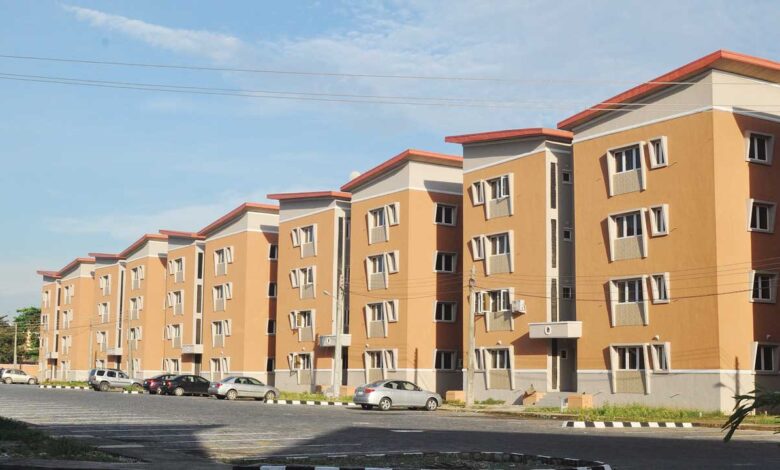Affordable Housing Gap Widens Globally: Urgent Action Needed to Avert Crisis
Housing

In a world grappling with a growing housing crisis, the concept of affordable housing has emerged as a central pillar of sustainable development. The global housing dilemma transcends mere economics, delving into the very essence of human well-being. This report explores the multifaceted facets of affordable housing, its significance on a global scale, and the diverse strategies employed by nations to address this pressing issue.
The Global Perspective on Affordable Housing
Housing, as a basic human need, extends beyond the mere shelter of individuals. According to the World Health Organization, it encompasses not only the physical structure but also all essential services, facilities, equipment, and amenities crucial for the overall physical, mental, and social well-being of families. From this foundational definition, the notion of affordable housing can be approached from various angles, both quantitative and qualitative.
A prevalent view is that affordable housing denotes a specific type of housing offered by governments to those unable to afford it, commonly referred to as social housing. However, a more generalized perspective defines housing as affordable when its cost, be it in the form of rent or mortgage payments, remains below 30% of a household’s income. The U.S. Department of Housing and Urban Development (HUD) identifies households allocating over 30% of their income to housing expenses as experiencing a cost burden. Disturbingly, HUD estimates reveal that a staggering 12 million Americans are currently dedicating over 50% of their annual earnings to housing, plunging them into conditions of financial precarity.
READ ALSO: 6 Ways Affordable Housing Boosts Local Economies
A Global Crisis Unfolds
Europe, still reeling from the housing crisis triggered by the 2008 global financial meltdown, continues to witness a worsening situation. In-depth analyses presented in Habitat for Humanity’s Housing Review underscore the alarming trajectory of this ‘silent emergency.’ However, affordable housing is not solely an economic calculus; it encompasses the principles of physical adequacy and suitability for human habitation. In essence, a dwelling cannot be deemed affordable if it lacks adequate space, sanitation, and safety standards.
The housing conditions in developing countries present a grim picture, particularly in fast-growing cities. An estimated 40% to 75% of the populations in these urban centers reside in squatter settlements devoid of basic services. These cities, characterized by unexpected and unregulated growth, often fail to keep pace with urban planning and development.
The consequences of this phenomenon are dire, as millions migrate from rural areas to cities in pursuit of employment, leading to overcrowded slums with inadequate access to safe water, sanitation, and secure tenure. The current estimate suggests that around 881 million people in developing countries alone live in slums, a substantial increase from 689 million in 1990.
Affordable Housing as a Sustainable Goal
The importance of accessible affordable housing extends beyond individual well-being; it’s a linchpin of sustainable development. Consequently, it has been integrated into the UN Sustainable Development Goals (SDGs) as Goal 11. By 2030, the objective is to place housing at the center of dedicated policies aimed at significantly reducing the number of people living in substandard conditions.
Innovative programs are shedding light on the potential inherent in providing reliable, non-profit financing options like mortgages and loans to those struggling to improve their living conditions. One such initiative, the “Building Assets, Unlocking Access” project, has already positively impacted over 150,000 individuals within its first six years.
Local Approaches: Tailoring Solutions to Specific Needs
While UN member states provide a global framework, it’s crucial to acknowledge that a one-size-fits-all approach cannot address the housing crisis comprehensively. The key lies in adopting localized urban development strategies that consider the unique needs of each country or region.
For instance, Pakistan faces massive rural-to-urban migration, necessitating the construction of around 400,000 housing units annually for the next 15 to 20 years. Indonesia confronts a similar scenario, requiring an annual addition of 820,000 to 920,000 new units to meet demand. Conversely, Thailand, with a long history of social housing, boasts the world’s highest home ownership rate at 81%.
Diverse Housing Policies Across the Globe
READ ALSO: Nearly 40 housing tech firms make the 2023 Inc. 5000 list
Countries worldwide have implemented various strategies to tackle the housing issue, encompassing both developing and Western nations. These strategies fall into three primary categories:
Clearance and Relocation: Involves demolishing slums and relocating residents to new, standardized, and sanitary housing.
Public Housing Construction: Governments construct low-cost housing units targeting lower-income groups.
Government Subsidies and Rent Control: Policies may include subsidies to assist families in paying rent, ensuring it remains affordable based on a percentage of their monthly income.
Different nations have adopted these approaches individually or in combination, depending on their unique circumstances. While social housing is widespread in Western Europe, housing affordability remains a significant challenge across the European Union. The United States employs a mixed approach that combines public housing and subsidies, yet housing remains prohibitively expensive in many major cities.
In South America, government subsidies tend to take precedence. For instance, Chile’s Ministry of Housing and Urban Development (MINVU) initiated a rental subsidy program for low- and middle-income groups. This program assists families in contributing to rent, with an average rate of 25% of their monthly income serving as subsidized housing rent for those who would otherwise struggle to afford housing.
READ ALSO: Qatar begins construction of 500,000 Housing units in Kaduna, as HDAN commends the State Government
Global Collaborations Address Urban Poverty
In Africa and South Asia, the focus often centers on addressing the proliferation of slums. In 2018, to confront this challenge collectively, the Secretariat of the African, Caribbean, and Pacific (ACP), the European Commission (EC), and UN-Habitat launched the Participatory Slum Upgrading Programme (PSUP). This collaborative effort aims to jointly address urban poverty and enhance the lives of slum dwellers within ACP regions, with 35 ACP states currently implementing the program.
In the last two years, the ShelterTech Accelerator program in Kenya has sought to identify, nurture, and accelerate startups and growth-stage companies offering shelter-related products and services to low-income households. The objective is to assist the government in bridging the housing deficit of 2 million homes in the country.
Conclusion
The global housing crisis demands immediate and multifaceted solutions. Affordable housing is not just an economic metric; it is a fundamental human right and a catalyst for sustainable development. As the world grapples with this complex issue, it becomes increasingly evident that a localized approach, tailored to the specific needs of each region, is key to effectively addressing the housing dilemma and advancing the UN’s Sustainable Development Goals.
Source:





